 Former test pilot, Gemini and Apollo astronaut Jim Lovell dies at the age of 97. A U.S. Navy pilot, Lovell had applied to join NASA during the agency’s initial search for the Mercury astronauts, but was sidelined from selection due to medical test results, only to be brought into the space program when new astronauts were recruited for the Gemini program. Lovell was the pilot of Gemini 7 (the first long-duration space mission, lasting two weeks), and commanded Gemini 12, the final flight of that program. On Apollo 8, the first crewed mission to orbit the moon, Lovell served as command module pilot, and was originally scheduled to command Apollo 14. A change in flight rotation moved Lovell and his crew up to Apollo 13. Faulty wiring in an oxygen tank caused an explosion in the command module, venting much of the vehicle’s oxygen supply into space and causing the cancellation of the intended third moon landing in favor of preserving resources to attempt to bring the crew home safely. After the harrowing journey, Lovell retired from NASA, and later co-wrote (with Jeffrey Kluger) the memoir Lost Moon, which was then optioned as the basis of the Ron Howard movie Apollo 13.
Former test pilot, Gemini and Apollo astronaut Jim Lovell dies at the age of 97. A U.S. Navy pilot, Lovell had applied to join NASA during the agency’s initial search for the Mercury astronauts, but was sidelined from selection due to medical test results, only to be brought into the space program when new astronauts were recruited for the Gemini program. Lovell was the pilot of Gemini 7 (the first long-duration space mission, lasting two weeks), and commanded Gemini 12, the final flight of that program. On Apollo 8, the first crewed mission to orbit the moon, Lovell served as command module pilot, and was originally scheduled to command Apollo 14. A change in flight rotation moved Lovell and his crew up to Apollo 13. Faulty wiring in an oxygen tank caused an explosion in the command module, venting much of the vehicle’s oxygen supply into space and causing the cancellation of the intended third moon landing in favor of preserving resources to attempt to bring the crew home safely. After the harrowing journey, Lovell retired from NASA, and later co-wrote (with Jeffrey Kluger) the memoir Lost Moon, which was then optioned as the basis of the Ron Howard movie Apollo 13.
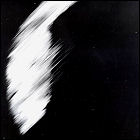 NASA launches the Earth-orbiting satellite Explorer 6 atop a Thor-Able rocket, intended to study various space and upper atmospheric phenomena, as well as to take photos of Earth with an experimental camera system designed to refine engineering concepts for monitoring weather from orbit. Explorer 6 does indeed capture the first (admittedly less than ideal) photo of Earth taken from orbit, from a vantage point of 17,000 miles above Mexico in its elliptical orbit. Explorer 6 will remain in orbit for just under two years.
NASA launches the Earth-orbiting satellite Explorer 6 atop a Thor-Able rocket, intended to study various space and upper atmospheric phenomena, as well as to take photos of Earth with an experimental camera system designed to refine engineering concepts for monitoring weather from orbit. Explorer 6 does indeed capture the first (admittedly less than ideal) photo of Earth taken from orbit, from a vantage point of 17,000 miles above Mexico in its elliptical orbit. Explorer 6 will remain in orbit for just under two years.
 The Soviet Union launches the Zond 7 unmanned spacecraft, an unmanned version of the Soyuz 7K-L1 space vehicle intended to take cosmonauts around the moon. Carrying no crew, this vehicle takes pictures and tests various spacecraft systems without risking human lives. Zond 7 returns to Earth using an unusual multiple-skip atmospheric re-entry profile on August 14th. If Zond 7 had been carrying a crew, this would have been the first nominal flight of the Soyuz 7K-L1 vehicle. No cosmonaut crews would reach the moon prior to the dissolution of the Soviet Union in the late 20th century.
The Soviet Union launches the Zond 7 unmanned spacecraft, an unmanned version of the Soyuz 7K-L1 space vehicle intended to take cosmonauts around the moon. Carrying no crew, this vehicle takes pictures and tests various spacecraft systems without risking human lives. Zond 7 returns to Earth using an unusual multiple-skip atmospheric re-entry profile on August 14th. If Zond 7 had been carrying a crew, this would have been the first nominal flight of the Soyuz 7K-L1 vehicle. No cosmonaut crews would reach the moon prior to the dissolution of the Soviet Union in the late 20th century. London Weekend Television airs the fifth episode of the alternate-future-history series The Guardians, starring Gwyneth Powell and Cyril Luckham.
London Weekend Television airs the fifth episode of the alternate-future-history series The Guardians, starring Gwyneth Powell and Cyril Luckham.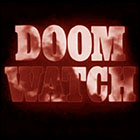 BBC1 airs the 35th episode of Doomwatch. This episode, guest starring Nicholas Courtney (who is, at this time, still appearing in Doctor Who as Brigadier Lethbridge-Stewart), no longer exists in the BBC’s archives.
BBC1 airs the 35th episode of Doomwatch. This episode, guest starring Nicholas Courtney (who is, at this time, still appearing in Doctor Who as Brigadier Lethbridge-Stewart), no longer exists in the BBC’s archives. The
The 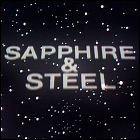 ITV airs the ninth episode of P.J. Hammond’s science fiction series Sapphire & Steel, starring David McCallum and Joanna Lumley.
ITV airs the ninth episode of P.J. Hammond’s science fiction series Sapphire & Steel, starring David McCallum and Joanna Lumley. The five-month-long strike of unionized Hollywood writers comes to an end, allowing numerous television series and movies to go back into pre-production. With the American television network schedule introducing new shows as early as September in many cases, the “new fall season” does not begin on time, and most series do not have new episodes on the air until the critical Nielsen TV ratings sweeps month of November.
The five-month-long strike of unionized Hollywood writers comes to an end, allowing numerous television series and movies to go back into pre-production. With the American television network schedule introducing new shows as early as September in many cases, the “new fall season” does not begin on time, and most series do not have new episodes on the air until the critical Nielsen TV ratings sweeps month of November.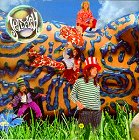 Power pop supergroup Jellyfish releases its debut album
Power pop supergroup Jellyfish releases its debut album 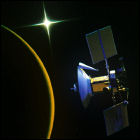 Launched via space shuttle in May 1989, the long-delayed Magellan space probe reaches the planet Venus after an unusually long voyage (15 months) and begins an orbital insertion maneuver. Where most missions to Venus have reached the planet in only a few months, Magellan has had to make do without the more powerful Centaur liquid-fueled booster stage, resulting in a journey of a year and three months. (The Centaur upper stage had been cancelled after the Challenger disaster because it was felt that carrying an additional liquid-fueled rocket in a shuttle cargo bay was too risky.) Magellan is placed into an elliptical orbit, completely circling Venus every three hours, where it will conduct high-resolution radar mapping of the surface at the closest point in its orbit, and transmitting the resulting data to Earth while furthest from Venus. The first phase of the mapping mission will last through 1991.
Launched via space shuttle in May 1989, the long-delayed Magellan space probe reaches the planet Venus after an unusually long voyage (15 months) and begins an orbital insertion maneuver. Where most missions to Venus have reached the planet in only a few months, Magellan has had to make do without the more powerful Centaur liquid-fueled booster stage, resulting in a journey of a year and three months. (The Centaur upper stage had been cancelled after the Challenger disaster because it was felt that carrying an additional liquid-fueled rocket in a shuttle cargo bay was too risky.) Magellan is placed into an elliptical orbit, completely circling Venus every three hours, where it will conduct high-resolution radar mapping of the surface at the closest point in its orbit, and transmitting the resulting data to Earth while furthest from Venus. The first phase of the mapping mission will last through 1991.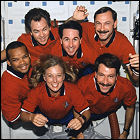 NASA launches Space Shuttle Discovery on the 86th shuttle flight, a 12-day mission to deploy a spectroscopy experiment and practice spacewalking construction techniques vital to the upcoming early missions to build the International Space Station. Aboard Discovery for her 23rd flight are Commander Curtis Brown, Pilot Kent Rominger, mission specialists Jan Davis, Robert Curbeam and Stephen Robinson, and payload specialist Bjarni Tryggvason.
NASA launches Space Shuttle Discovery on the 86th shuttle flight, a 12-day mission to deploy a spectroscopy experiment and practice spacewalking construction techniques vital to the upcoming early missions to build the International Space Station. Aboard Discovery for her 23rd flight are Commander Curtis Brown, Pilot Kent Rominger, mission specialists Jan Davis, Robert Curbeam and Stephen Robinson, and payload specialist Bjarni Tryggvason. Showtime airs the 80th episode of The Outer Limits, a revival of the 1960s science fiction anthology series. Lisa Zane (Roar, Dinotopia) and Robert Picardo (Star Trek: Voyager) guest star.
Showtime airs the 80th episode of The Outer Limits, a revival of the 1960s science fiction anthology series. Lisa Zane (Roar, Dinotopia) and Robert Picardo (Star Trek: Voyager) guest star. Pay cable channel Showtime premieres the
Pay cable channel Showtime premieres the 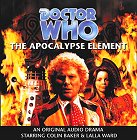 Big Finish Productions
Big Finish Productions 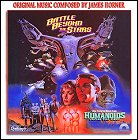 GNP Crescendo Records releases
GNP Crescendo Records releases  The
The 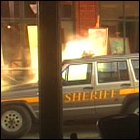 Sci-Fi Channel airs
Sci-Fi Channel airs 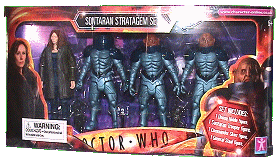 British toymaker Character Options releases
British toymaker Character Options releases  Syfy airs the 38th episode of the science fiction series Eureka, starring Colin Ferguson, Salli Richardson, and Joe Morton. Niall Matter (Primeval: New World) guest stars.
Syfy airs the 38th episode of the science fiction series Eureka, starring Colin Ferguson, Salli Richardson, and Joe Morton. Niall Matter (Primeval: New World) guest stars.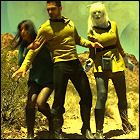 The
The  Former test pilot, Gemini and Apollo astronaut Jim Lovell dies at the age of 97. A U.S. Navy pilot, Lovell had applied to join NASA during the agency’s initial search for the Mercury astronauts, but was sidelined from selection due to medical test results, only to be brought into the space program when new astronauts were recruited for the Gemini program. Lovell was the pilot of
Former test pilot, Gemini and Apollo astronaut Jim Lovell dies at the age of 97. A U.S. Navy pilot, Lovell had applied to join NASA during the agency’s initial search for the Mercury astronauts, but was sidelined from selection due to medical test results, only to be brought into the space program when new astronauts were recruited for the Gemini program. Lovell was the pilot of